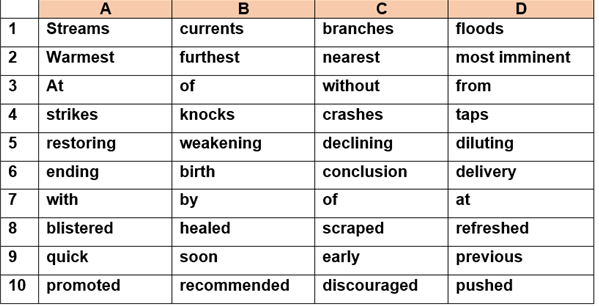I. LET´S TALK ABOUT THE VERBS OF THE SENSES

To begin with, let´s refer to our five senses: sight, smell, taste, sound and touch. Through our senses we can talk about the feelings and impressions that we receive from the inner and outside world and we use the verbs see, seem, look, appear, smell, taste, hear, sound, feel and touch, among others. These are called STATIVE verbs or non-action verbs; therefore, they CANNOT BE USED IN PROGRESSIVE FORMS. Let´s analyze the following examples:
- That body lotion smells nice.
- This lasagna tastes fantastic, Mom.
- In my opinion, everything seems well.
- Alice doesn’t look her age.
- You sound very happy, Fred!
WHAT´S THE DIFFERENCE BETWEEN DYNAMIC AND STATIVE VERBS?
Most dynamic verbs, also known as action-verbs, describe activities or events which can begin and finish. Dynamic verbs can be used in the simple present, simple past and perfect forms (works, worked, has worked, had worked) as well as the continuous or progressive forms (is working, was working, has been working, had been working). Here are some other examples of dynamic verbs: go, come, eat, drink, type, read, write, listen, speak, watch, give, take, say, grow, play, sleep, cook, talk, etcetera.
In contrast, stative verbs usually refer to a state or condition which is static or unchanging. They can be divided into verbs of perception or relation.
- Stative verbs of perception refer to things in the mind. For example: see, seem, look, appear, smell, taste, hear, sound, feel, touch, love, hate, like, think, recognize, prefer, doubt, mean, agree, believe, doubt, guess, imagine, know, remember, suspect, understand, etcetera.
- Stative verbs of relation describe the relationships between things. For example, contain, own, belong to, have (possess), concern, consist of, cost, depend on, include, lack, need, owe, etcetera.

Let us remember that we CANNOT use STATIVE verbs in the continuous (progressive) forms. For example, we CANNOT say "The bowl is containing some soup." Contain is a state, not an action, so it is always in the simple form: "The bowl contains some soup."
WHEN NOT TO USE THE PRESENT CONTINUOUS.
By now we know we cannot use the present continuous with STATIVE verbs. The only thing we can do is to use CAN or CAN’T with some of these stative verbs to talk about something that is happening at the moment of speaking with the verbs smell, feel, see, hear, taste, look and sound. Here are a few more examples:
- Sorry, I can’t hear you. Wait, I´ll get closer to you.
- My friend, I can taste victory in our game today!
- I can smell coffee and fresh muffins.
- I can feel a lump on my head now
- We can see a nice car in your garage.
WHEN TO USE THE PRESENT CONTINUOUS OR THE PRESENT PERFECT TENSES.

Note that the verbs feel, hear, look, see, smell, and taste can also be used as DYNAMIC VERBS, in present continuous or present perfect tenses, when they are VOLUNTARY ACTIONS. For example:
- Paul’s tasting the lasagna to see if it needs more meat sauce.
- I’m feeling the fabric to check on its softness and smoothness.
- I’ve been feeling tired and blue lately.
- Mel is looking in the direction of the Madison Square Garden Arena. He loves it!
- I’ve been hearing a lot of great things about Louis recently.
- I love new fragrances. I´m smelling some new ones in these scent blotters now.
- I’m seeing Mr. King for lunch today. We´ll talk about our new business.
- How long have Jennifer and Tom been seeing each other?
SPECIAL CASES. SHOULD WE USE INFINITIVE OR GERUND AFTER SENSE VERBS?
The answer is both. After feel, hear, listen, notice, see and watch we can use a gerund to express an incomplete action, an action in progress, or a repeated action. For example:
- We saw your kids playing in the park.
(Action was in progress and not completed)
- We heard Joe and Paul talking about the project.
(Action in progress and not completed)
In contrast, note that after feel, hear, listen, notice, see and watch we can use an infinitive to talk about a completed action. That is, we heard or saw someone or something perform an action from beginning to end. It is usually a short and not a repeated action. For example:
- We saw your kids play in the park.
(Completed action)
- We heard Joe and Paul talk about the project.
(Completed action)
WHAT´S THE DIFFERENCE BETWEEN “SEEM” AND “LOOK”?

When we use “seem” and “look” as STATIVE verbs, there is some difference in meaning. Let´s analyze these examples:
- Jennifer looks tired.
It´s my perception after seeing her face.
- Jennifer seems responsible.
It´s my perception after watching her behavior–her voice, movements, etc.
- Matt looks handsome.
My perception upon looking at his physique.
- Matt seems nice.
My perception by his behaviour.
ARE SENSE VERBS FOLLOWED BY ADJECTIVES OR ADVERBS

When sense verbs are used as STATIVE verbs, they are followed by adjectives, and not by adverbs. For example:
- Jennifer seems honest
- Meghan looks tired.
- Billy felt bad after his comment.
II. CONSOLIDATION
TRY THE FOLLOWING QUIZ TO TEST YOUR KNOWLEDGE OF VERBS OF THE SENSES. Choose the correct letter a, b or c to complete the sentences correctly.
III. EXERCISE I.
Choose a, b or c to complete the following sentences correctly.
IV. READING TEXT.
READING COMPREHENSION AND VOCABULARY BUILDING
Read the text below and decide which answer (A,B,C or D) best fits each gap. Use higher case letters


V. BIBLIOGRAPHY
Cambridge University Press. (2015). Cambridge Advanced Learner’s Dictionary. Fourth Edition.
Eastwood, J. (2019). Oxford Practice Grammar. Intermediate. Oxford University Press.
Hewings, M. (2013) Advanced Grammar in Use with Answers: A Self-Study Reference and Practice Book for Advanced Learners of English. CUP
Murray, L. (2014) English Grammar. Cambridge University Press.
Swan, M & Walter, C. (2016). Oxford English Grammar Course. Intermediate. Oxford University Press.
VI. WEB RESOURCES
Images_Compra propia de licencias de banco de imágenes de Pixton y Pngtree, exentas de derechos de autor. https://www-es.pixton.com/ & https://es.pngtree.com/free-backgrounds.
Reading Text retrieved and adapted from https://www.gutenberg.org/ebooks/1331_ ABC´s of Science by Charles A. Oliver. Chapter 7. This public-domain (U.S.) text was scanned and proofed by Ron Burkey. The Project Gutenberg text (designated “abcos10”) was subsequently converted to LATEX with GutenMark software, and then re-formatted.
VII. CREDITS
- All practice exercises and charts were written by Connie Reyes Cruz_2022_ENES- LEÓN-UNAM
- Audio version performed by Kimberly and Matt_Compra propia de licencia de uso de voces en Voicemaker, exenta de derechos de autor. https://voicemaker.in/ _Connie Reyes Cruz_2022_